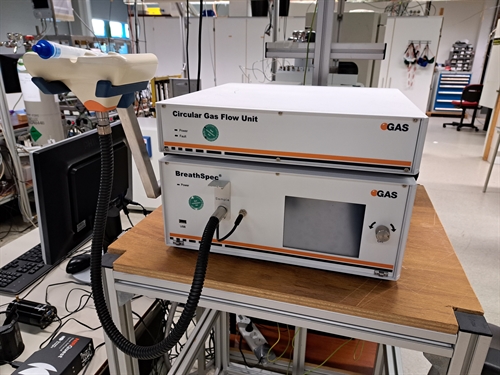GC-IMS
In ion mobility spectrometry (IMS), ions travel at atmospheric pressure against a flow of an inert drift gas. The drift time of each substance is determined by the mass of the ion and the geometric structure. Therefore, IMS has the capability to differentiate isomeric molecules. The detection limits of the instrument are in the low part-per-billion volume (ppbV) range for volatile organic compounds (VOC). Ionization of VOCs takes place by a reaction with the reactant ion H+(H2O)n by means of proton transfer, i.e. ionization occurs when the proton affinity of the VOC is greater than the proton affinity of water. The combination of IMS with upfront separation using a multi-capillary column (MCC) allows analysis of complex mixtures of VOCs.


Our GC-IMS system (BreathSpec®) is equipped with a circular gas flow unit. In this unit the carrier gas is filtered and pumped back into the system. The advantage of this that no external gas supply is required, hence, the system can be easily used for field applications.
Example of applications for GC-IMS
- Breath analysis
- Illicit drug detection
- On-site VOC monitoring